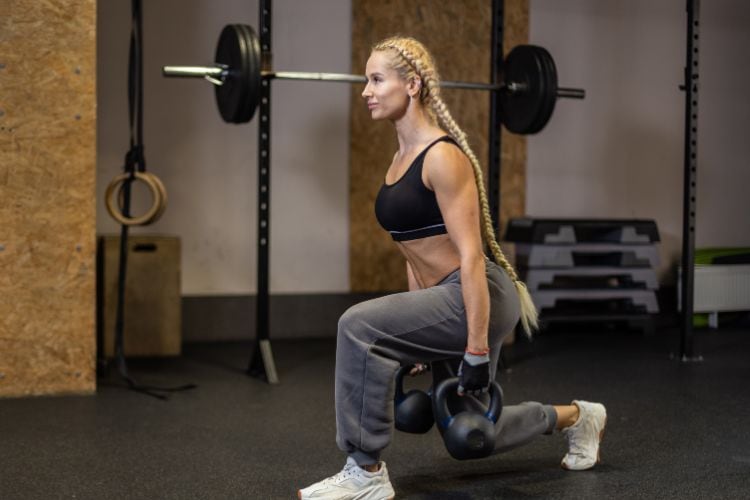Sign up for workout ideas, training advice, reviews of the latest gear and more.






When it comes to efficient, powerful strength training, nothing rivals a barbell. Whether you’re working out at home or in the gym, 30-minute barbell full-body workouts are one of the fastest and most effective ways to increase muscle mass, burn fat, and improve total-body conditioning. In just half an hour, you can perform compound lifts that hit multiple muscle groups, trigger maximum calorie burn, and accelerate your fitness progress.
In this blog post, you’ll learn how to structure the perfect 30-minute barbell workout, what exercises to include, how to safely progress, and the major benefits of using a barbell for full-body training.
Many people struggle to fit long workout sessions into their day. The beauty of barbell training is that you can train your entire body in just 30 minutes by focusing on compound movements like squats, deadlifts, presses, and rows. These exercises work multiple muscle groups at once, allowing for an intense workout in a short timeframe.
Barbell workouts are ideal for progressive overload—the key to building strength and muscle. By gradually increasing the weight you lift, you stimulate muscle growth and strength gains across the body.
Full-body barbell workouts trigger EPOC (excess post-exercise oxygen consumption), meaning your body continues to burn calories even after you finish your session. This makes them an excellent choice for fat loss and improved metabolic function.
To get started, you’ll need:
Your session should include:
Here’s a sample barbell workout designed to hit your entire body in 30 minutes. Perform this 3 times per week with at least one rest day between sessions.
Start with 5 minutes of dynamic movement:
Complete the following exercises in circuit fashion. Perform 3 rounds of each move with 60 seconds rest between sets. Choose a weight that challenges you but allows for proper form.
Muscles worked: Quads, glutes, hamstrings, core
Reps: 10–12
Rest: 60 seconds
Barbell squats are the king of lower body exercises. Keep your chest lifted and knees tracking over your toes. Engage your core throughout the movement.
Muscles worked: Lats, rhomboids, biceps, traps
Reps: 10–12
Rest: 60 seconds
Hinge at your hips, keep your spine neutral, and row the barbell to your lower chest. This strengthens the entire upper back and improves posture.
Muscles worked: Hamstrings, glutes, back, core, traps
Reps: 8–10
Rest: 60 seconds
The deadlift is a full-body powerhouse move. Focus on pushing through your heels and keeping the bar close to your shins. Avoid rounding your back.
Muscles worked: Shoulders, triceps, upper chest
Reps: 8–10
Rest: 60 seconds
Press the barbell from shoulder level straight overhead, locking out at the top. This move builds upper body strength and core stability.
Muscles worked: Glutes, hamstrings, lower back
Reps: 12–15
Rest: 45 seconds
Lie on the floor, place the barbell over your hips, and drive through your heels to lift your hips. Excellent for glute activation and posterior chain development.
If time allows, add this quick conditioning circuit:
Here’s how to rotate variations across the week to target the body from multiple angles:
Never sacrifice technique for weight. Learning proper barbell mechanics is essential to prevent injury and build a solid foundation.
Form feedback helps correct issues early. If training solo, record your lifts or use mirrors to assess posture and bar path.
Add small increments of weight weekly. A typical progression might be 2.5–5 lbs per side depending on the lift and your training age.
A 30-minute full-body barbell workout can be intense. Make sure you:
Barbell lifts recruit multiple muscle groups in every rep, making them the gold standard for efficient muscle gain.
These workouts are metabolic monsters, burning hundreds of calories while promoting muscle retention during weight loss.
Heavy compound lifts stimulate the release of testosterone and growth hormone, which aid in strength and muscle growth.
Barbell training increases power, coordination, and balance—benefiting athletes in sports and everyday movement patterns.
From beginners to advanced lifters, barbell training can be scaled with variations, tempos, and load adjustments.
Always warm up your joints and nervous system. A cold body is more prone to injury.
Build a strong foundation first. Ego lifting leads to poor form and higher injury risk.
Tight hips, shoulders, or ankles can limit your form. Incorporate mobility drills before and after training.
Use a workout log or app to track sets, reps, and weight. This keeps you motivated and ensures progress.
Recovery is where real growth happens. After your 30-minute session:
Start with the barbell alone or light weights to master mechanics.
Great for improving strength, burning fat, and building lean muscle quickly.
With just 30 minutes, barbell workouts deliver big results in minimal time.
These movements improve power, core strength, and total-body resilience.
The barbell remains one of the most powerful tools in fitness. A well-designed 30-minute barbell workout hits every major muscle group, challenges your cardiovascular system, and sets the stage for long-term strength and physique improvements.
Whether you’re looking to build muscle, shed fat, or increase functional strength, a consistent 30-minute barbell full-body workout—performed 2–3 times per week—can transform your training.
Start light, move with purpose, and progress steadily. In just half an hour a day, your barbell can take you a long way toward your fitness goals.
2–3 sessions per week are ideal, with at least one rest day in between.
Absolutely. Consistent, progressive 30-minute workouts focused on compound lifts are highly effective for muscle growth.
You can modify with front squats, landmine squats, or goblet squats using a barbell plate.
Yes. Add light cardio on alternate days or perform metabolic barbell circuits for conditioning.
Want more workout and video guide?
Follow us on Pinterest, Facebook, and Subscribe to our Newsletter and Stay tuned for FREE downloads of our App coming soon!
Stay up to date on the latest women’s health, fitness and lifestyle trends and tips.